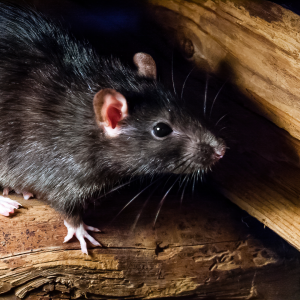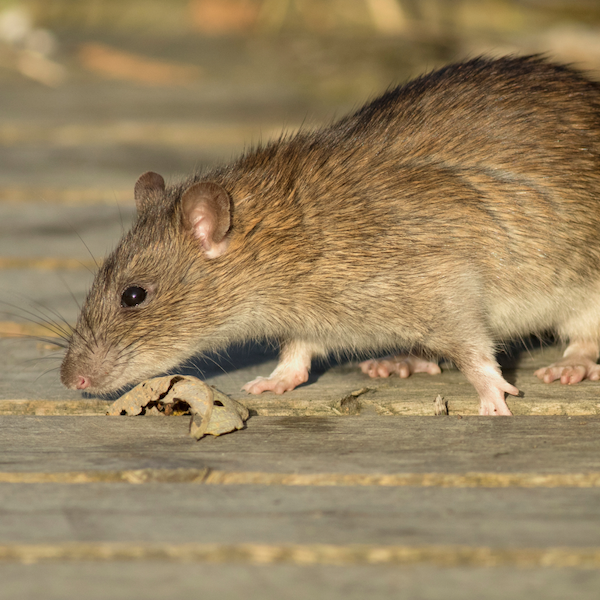Of all urban invaders, few pests are as notorious and resilient as rats. Among the diverse species of these rodents, the black rat (Rattus rattus), or roof rat, and the brown rat (Rattus norvegicus), also known as the Norway rat, stand out as prevalent troublemakers. Both species share a propensity for causing havoc in human habitats, yet they differ significantly in their behaviors, habitats, and impact on human environments.
In this exploration of the black rat vs. brown rat, we’ll delve into their distinct characteristics, habits, and the challenges they pose. Understanding these differences is pivotal in formulating effective pest control and eradication strategies.
Physical Attributes: Discerning Between Black and Brown Rats
One of the primary distinctions of a black rat vs. brown rat lies in their physical appearance. As its name suggests, the black rat typically boasts a slender, agile build with sleek black or dark gray fur and a relatively long tail. Conversely, the brown rat appears larger and bulkier, with brown or gray-brown fur, a shorter tail than its body length, and a more robust build.
These differences in physical attributes are crucial in distinguishing between the two species. While black rats are generally better climbers, utilizing their long tails for balance, brown rats are powerful diggers and tend to navigate terrestrial environments more adeptly.
Habitat Preferences: Where Do They Thrive?
Black rats prefer elevated spaces, favoring rooftops, attics, and high indoor areas. They are skilled climbers, using their agility to access structures via trees, vines, or utility lines. Brown rats are more inclined to live in ground-level habitats, burrowing into the soil or seeking refuge in basements, sewers, and lower levels of buildings.
Understanding these habitat preferences is crucial for effective pest management. Inspections tailored to these specific behaviors can aid in identifying the species infesting a property, allowing for targeted control measures.
Behavioral Traits of a Black Rat vs. Brown Rat
The behavioral patterns of black rats and brown rats also diverge significantly. Black rats are known for their dexterity and adaptability, displaying a preference for exploration and establishing nests in secluded, high areas. They are more likely to infest urban areas, often posing challenges to structures by gnawing through wiring, insulation, and stored items.
While also adaptable, brown rats exhibit a more cautious and territorial nature. They tend to establish colonies in burrows, underground tunnels, or lower levels of buildings, preferring secluded areas. Brown rats are proficient diggers, creating complex burrow systems for shelter and reproduction. Their omnivorous diet and robust disposition often lead them to scavenge for food in various environments, contributing to their successful colonization in diverse habitats.
Reproductive Patterns: Prolific Breeders of Urban Nuisance
Both black and brown rats are prolific breeders capable of rapidly multiplying and exacerbating infestation issues. Black rats reach maturity earlier, typically around 2 to 3 months, and can produce several litters per year, each containing up to 6 to 8 pups. Their shorter gestation period allows for quicker population growth.
On the other hand, brown rats have a slightly longer gestation period and generally produce larger litters, ranging from 7 to 12 pups. They reach maturity at around 2 to 3 months, similar to black rats. These reproductive capabilities contribute significantly to their success in colonizing urban environments, making population control challenging.
Health Risks and Impact: Menace to Human Habitats
The black rat vs. brown rat: which presents a bigger threat to your home?
Both black and brown rats pose substantial health risks to human inhabitants. Their presence in urban areas increases the chances of transmitting diseases through contaminated food, water, or direct contact with their droppings and urine. Diseases such as leptospirosis, salmonellosis, and rat-bite fever are among the health hazards of rat infestations.
Furthermore, their destructive gnawing habits can cause extensive damage to structures, electrical wiring, insulation, and stored items. This poses safety risks and leads to costly repairs and potential fire hazards, making their control and elimination imperative for maintaining safe and habitable environments.
Understanding the differences between a black rat vs. brown rat is fundamental in devising targeted pest control strategies. Accurate identification of the species infesting a property allows for the implementation of tailored eradication methods, enhancing the effectiveness of pest management efforts.
Effective Control Measures: Managing Black Rat vs. Brown Rat Infestations
Tailored strategies are essential in addressing black rat vs. brown rat infestations due to the distinct behaviors and habitats of these rodent species.
Black Rat Control
Given their penchant for elevated spaces, black rat control strategies often focus on high areas and entry points. Trimming tree branches that provide access to roofs, sealing gaps in roofing, and closing entry points are effective measures to prevent their entry.

Using bait stations in high spots and specialized traps for these agile climbers helps get rid of them.
Brown Rat Control
Controlling brown rats entails targeting ground-level habitats and entry points at lower levels of structures. Sealing cracks in foundations, blocking entry points, and reinforcing doors and windows are effective preventive measures.

Placing bait stations and traps in areas frequented by brown rats, such as near burrows or along travel routes, helps eliminate them.
Professional Intervention
At the end of the day, dealing with a black rat vs. a brown rat infestation may require more than a DIY fix. In severe infestations or persistent problems, seeking assistance from professional pest control services is highly advisable. Trained experts possess the knowledge, tools, and experience to tackle black rat and brown rat infestations effectively.
Experienced technicians can employ a combination of control methods tailored to the specific species and infestation severity– offering options for comprehensive elimination and further preventative measures.
proof.’s Black and Brown Rat Control
In discussing the black rat vs. brown rat, these two species exhibit distinct traits, habitats, and behaviors that set them apart. Understanding these differences is pivotal in developing targeted pest control and eradication strategies.
From physical attributes and habitat preferences to reproductive patterns and impact on human environments, each species has nuances requiring unique control and elimination approaches.
When you have rats in your home, give the professionals at proof. Pest Control a ring. We’ll swiftly remove troublesome rats and help get your home back to normal.

